Turkey TMI.
Posted on | December 25, 2014 | 2 Comments
If you don’t want to know how that turkey made it to your Christmas dinner table, stop reading now. Right now.
But if you’re curious, if you wonder how it happens, if you want to try it yourself (bless your heart), then go ahead and keep reading. Because it’s not that hard. It’s not that bad. And I’m not just saying that because I’ve had to do much more horrible things. Things like steal cud from one goat’s cheek and tube it into another goat’s rumen. Or peel a live duck out from under one side of a fence panel while trying to keep her breast meat attached, minus the strips the dogs were peeling off from their side of the fence. Or cart off 8 inches of boot-sucking muck in the pig pen while said pigs were trying to turn over each shovelful as I scooped it. It’s not as bad as all that.
Which makes it easy. Probably. Maybe.
I may not be a good judge of “easy” anymore.
In any case, it starts out just fine. When the poults arrived they were nothing but fuzz and fluff.
These particular poults were Black Spanish and part of an experiment to raise blackhead-resistant turkey stock. One of the first commercial breed turkeys we raised on our property was weakened by blackhead by butchering time. Blackhead (histomoniasis) is typically carried by chickens without any trouble but can decimate young turkey flocks. Most commercial producers cannot keep free range chickens where they raise turkeys because the disease is so problematic. Since our hens free range on the entire property, commercial turkey breeds weren’t a good fit for us. The solution was a heritage breed of turkeys called Black Spanish—-turkeys that had originally been raised by colonists and crossed with Eastern wild turkeys. The results was a bird that foraged well but also tolerated the mixed barnyard of early homesteaders. Still we upped the ante. We raised our 4 poults directly in the brooder room with a batch of chicks.
We figured if they survived that then they must be resistant to blackhead. Only 1 turkey died as a poult. Another turkey was picked off by a predator once she was free ranging as a 16 week old young hen (grrr!). Which left us with 2 handsome healthy jakes.
Besides an annoying habit of roosting on the cattle panel directly over the feed trough in the buck pen (poop in the bucks’ feed, ugh), the Black Spanish were easy keepers. Either their strengthening wings or my old trick of suspending a sheet over the cattle panel eventually convinced them to move their evening roost to the rafters of the chicken coop. Then it was just a matter of time. They ate with the chickens, foraged in the woods, and flew easily over fences when they became too big to squeeze through squares in the field fencing. We planned to keep one jake for breeding and one jake was scheduled for the roasting pan.
We went to 2 family Thanksgivings this year, but I didn’t have to cook for either of them (An early Merry Christmas to me! Thanks, hugs, and kisses to Aunt Peggy and Grammie.), so the turkeys got a free pass in November. And when an endless rain set in the last few weeks of December, I thought we might not be having turkey until next year. But when I started to think about buying a turkey for Christmas dinner, I just couldn’t do it. How shameful to buy a bird when a ripe one is waiting to be plucked (hah!) in the barnyard. So Pretty and I started setting up right before dusk.
Usually we butchered poultry by hanging them from the kids’ monkey bars. Why would one construct killing cones or butchering blocks when there was already a solidly built structure with metal rods at head height right next to the slides and swings? Creepy and convenient all in one. The family that plays together, butchers together, stays together, people.
The commercial turkeys that we butchered previously had topped the scales at over 30lbs, the breasts so heavy they tried to separate from the legs while hanging, but the monkey bars supported their weight just fine.
The problem was that it was already getting dark, it was drizzling again, and butchering at the monkey bars required attaching and hauling hoses out to the back yard as well as setting up work tables. At night, it would also mean setting up extension cords and work lights. That was a lot of work to manage in the dark. In the rain.
Luckily, in addition to raising 3 boys, I raised a girl. A girl who’d been helping with the farm chores (including the butchering) for a long time.
Yeah. That’s us on the playground again. Rinsing our bloody hands by the swings. But anyway….
The girl stood in the rain, took one look at the monkey bars in the fading light, and suggested we butcher the turkey right between the deck and the fence gate, using rebar from the garden, the deck hose for water, and the deck floodlights for lighting. In 30 seconds we had everything we needed all in one place, including an iron bar to hang the turkey.
Because she’s a girl. And girls get things done.
The boys were put in charge of of holding the trash bag for….um, parts and the hose for whenever we needed to rinse our hands or knives without contaminating them. We chose this guy for the Christmas meal.
Then came the hardest part of raising turkeys.
The first cut.
I’ve killed more poultry than I can remember. But every time, I have to pause before the first kill. Severing the jugular vein always requires a deep breath, a strong will, and a firm hand. Standing there, with the head held in one hand, the knife in the other, is standing on the line between farmer and consumer. Crossing over to the farmer side seems simple in the homesteading books, straightforward on the farm blogs, a snap on the youtube demonstrations. A farmer waits weeks or months for an animal to be the right size for butchering. But every farmer probably thinks twice right before the first cut.
Unless you’re butchering a mean rooster. The kind that chases. Or spurs. Then the first cut is as quick and smooth as cutting butter. But anyway….
Middle shined a flashlight on the neck feathers for me and Pretty took hold of the wings. The first cut can cause some fierce wing-flapping and getting struck in the face by the full-grown turkey wings can feel like being pistol-whipped. While simultaneously being stabbed in the eye with flight feathers. But this turkey didn’t even flinch. Just in case, I kept hold of his head once we had arterial blood flow. Because if you cut a jugular and then let go, the bird can start spinning and flailing and create a lovely blood water fountain. Nothing says Merry Christmas like you, your children, and the deck covered in blood. Ho, ho, ho.
Once the flow stopped, we left him to hang while we set up a trash bag for plucking and got the loppers for removing legs, wings, and neck. We have cleavers and poultry shears but, over the years, we’ve never found anything as effective as plain ol’ loppers found at the hardware store and used for pruning tree and bushes. I’d like to say we have a special set of loppers set aside just for poultry processing and kept clean and sanitary. But wiping the same loppers you use for trimming the butterfly bush with a few Lysol wipes before cutting birds is sanitary, right? Right?
Regardless, after a bit of time we returned to the turkey and Pretty took hold of his head, pulling the neck taut so I could cut it completely off for the rest of the processing. She hesitated after she grabbed him. You can usually tell by touch whether the adrenalin in the muscles or the nervous system of a dead bird still has some twitching or convulsing left to run its course.
“I think we need to wait some more,” she said.
“No,” I said wiping rain out of my eyes, “It’s getting late and we’re getting this done.”
I made a strong cut across the neck, severing all except a bit of sinew, and the turkey suddenly leapt wildly on the rebar, sliding to the side and knocking the rebar to the ground, flinging up blood and autumn leaves. The boys screamed on the deck, I threw up a hand to cover my eyes and when the action (mercifully) stopped, there was Pretty. Still holding the head, attached by a thin cord of tissue, and shaking her head at me.
Never doubt the girl.
Once we removed the legs, remaining strand of head, and wings, we laid the bird on the deck to pluck and eviscerate. The feathers came off by hand without difficulty, but it was the innards that worried me. Since it was a last minute decision, we hadn’t withheld the turkey’s food. That meant he had a crop full of dinner and, maybe, intestines full of much worse than that. If we punctured the crop or the intestines as we eviscerated, all that yuck would get onto the meat. Since the meat would be cleaned and cooked, a small amount of contamination with those kind of germs shouldn’t be a problem. But full and leaking crops and intestines aren’t pretty and smell even worse than they look.
Sure enough, the crop was so full that we couldn’t even reach into the cavity around it. So Pretty worked her way around it carefully with the paring knife until it was cut cleanly out and placed into the bag of….um, parts. Once it was in the bag I cut a section so you could see it was full to capacity and brimming with lots of turkey goodies.
Withhold food for 12 hours before butchering, people. Just do it.
The benefit of a bird as large as a turkey was that, once the tail feathers and the Pope’s nose were removed, we had plenty of room to reach in, grasp the entire innards with one hand and slide it all out in one piece. Don’t ask me why the fleshy part of the turkey butt is called the Pope’s nose. I’m not Catholic.
The boys cleaned up the trash bag of….um, parts, wound up the hose, and carried in the knives. The loppers went back into the woodshed. After they were properly sanitized, of course. By the rain. That’s sanitary, right? Right?
Pretty and I took tweezers to the last of the pinfeathers while watching another episode of The Human Planet.
Because nothing makes tweezing feathers off the turkey you just killed seem more normal than watching a video of a tribe that has to steal its food from lions.
We put that turkey in the farm fridge to rest for a couple days and by Christmas morning we were just like the rest of you. Worried about overcooking it. Or undercooking it. Low temperature or high? Bag or baste? Brine or dry rub? Better yet, how to cook the turkey, plus the stuffing, the corn casserole, and the garlic bread at the same time. In a single oven. Also, how many of the 7 layer bars could I eat off the dessert tray before it was obvious that someone was snacking on them before dinner?
After some friendly advice, I settled on high heat and a dry rub. And if it looked a bit alarming when it came out….
….under that crispy skin was loads of juicy, delicious turkey.
Have a Merry Christmas, people. Whatever kind of Christmas you have.
This kind of Christmas looks sweet.
But I happen to think this one is just a bit sweeter.
See ya on the flip side of the year.
Comments

2 Responses to “Turkey TMI.”
Leave a Reply
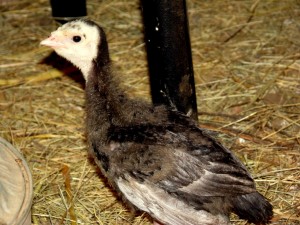
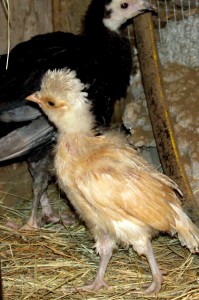
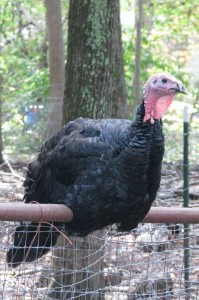
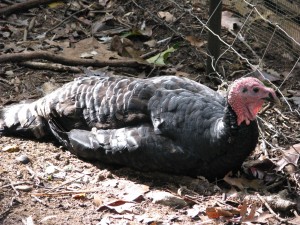
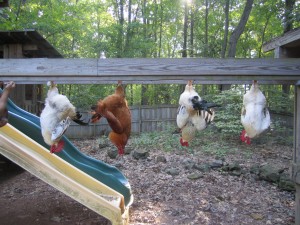
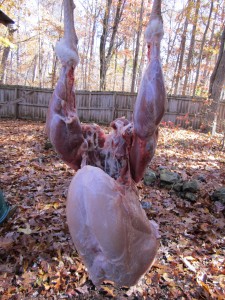
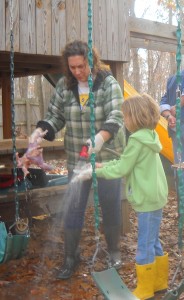
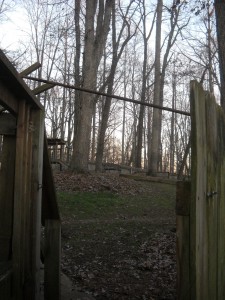
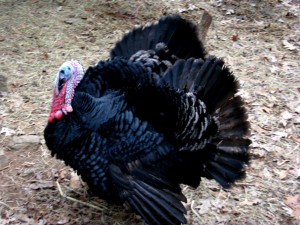
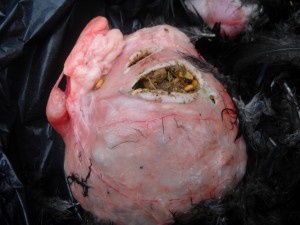
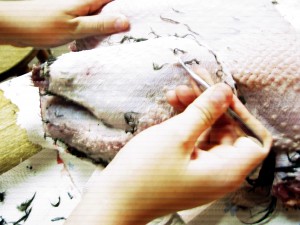
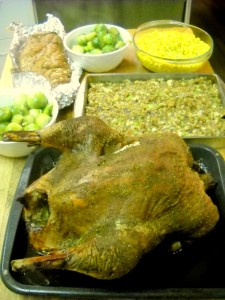
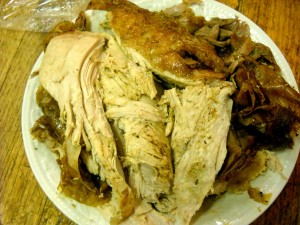
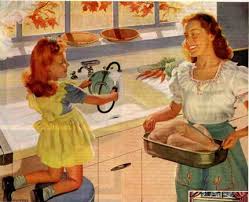
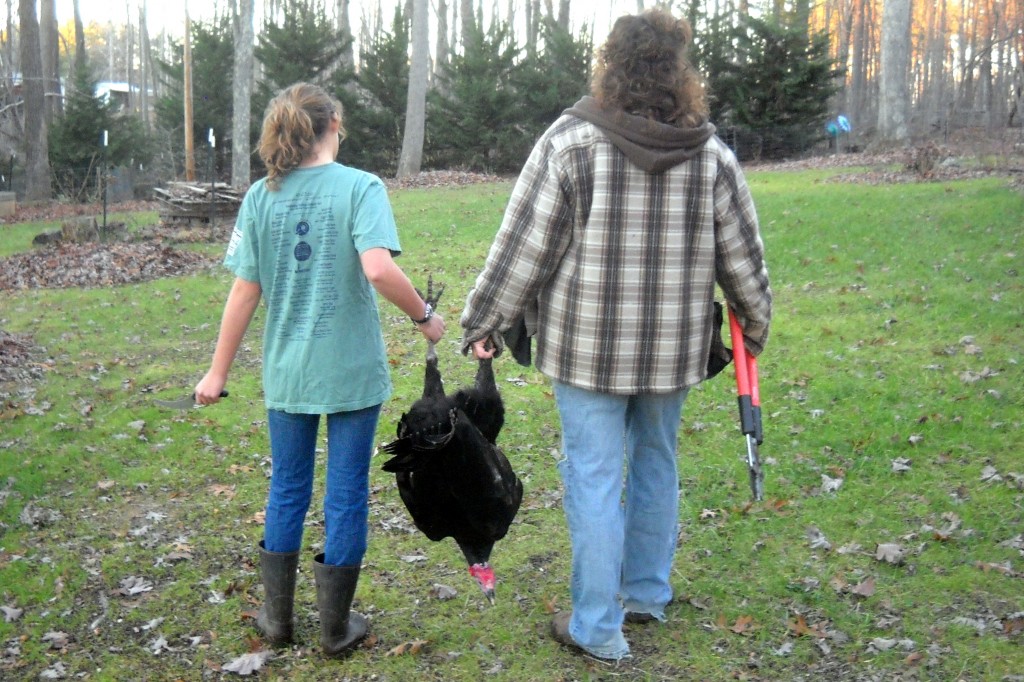



December 27th, 2014 @ 4:43 pm
Excellent mother-daughter photo!!!! G’Ma and G’Pa R would be proud of you all. Happy, healthy, prosperous, well fed, New Year!!!
January 2nd, 2015 @ 8:43 am
I LOVED the story. Having butchered loads of chickens and many turkeys with my children I couldn’t help but laugh and nod my head. That evening of turkey butchering is the thing memories are made of.